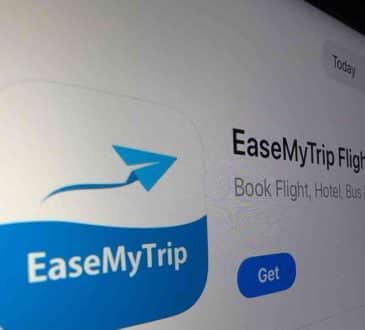How Should One Lead During A Time Of Crisis?

Kim Scott, a workplace consultant, recently wrote in a Wall Street Journal article, “Everyone will remember how their boss responded during this time.”
Kim is absolutely correct. At any time – in crisis mode or otherwise – all behaviors of the leader mold team culture. However, during a crisis, the behaviors of the leader have enormous influence. Turbulent times are tremendous opportunities for leaders to influence team culture – and consequently improve trust and team performance – in profound ways. While some behaviors are more impactful than others, there are a few that have an inordinate impact.
First, and most importantly, in a crisis the leader needs to get in front of his people either live (best), synchronous (good) or asynchronous (OK) webinar. Either way simply being visible can reduce uncertainty and anxiety – it builds trust. Tell them what you know and turn it over for questions. Genuinely listen to their concerns. You don’t need to have all the answers. That’s OK – the team will benefit enormously by your mere presence.
Early in my command tour at Naval Hospital Bremerton, WA there emerged a threat that the federal government was going to shut down due to a congressional budget crisis. For us that meant almost one-third of the hospital workforce — about 400 government service civilian employees — would be furloughed. They’d be out of work with no pay for an unknown length of time. As one could imagine, they were very anxious. Any information I received about the furloughs was provided as quickly as possible to the 400 civilian employees — they had the same information that I had.
As it became increasingly likely that the government was indeed going to shut down, my Executive Officer (Chief Operating Officer), Captain Ken Iverson, advised me to schedule a series of lunchtime town hall meetings with the 400 employees. He thought it important that they have the opportunity to ask me questions about the looming crisis. Given that we all had the same information, I thought it’d be a waste of time – what questions could I possibly answer?
Despite my concerns, Ken convinced me to do it. However, to prove that it was a waste of time, I secretly vowed to keep track of the number of questions that I was able to answer. I predicted there would be few. Nevertheless, we proceeded to schedule three lunchtime meetings over the next three days. At each one I started by telling them what I knew and then turned it over to them for questions.
Questions came fast and furious. As predicted, I didn’t provide a solid answer to a single question in any of the meetings. When the last meeting ended, I remember being frustrated that I didn’t have any answers. However, I did quietly congratulate myself. I was right – it indeed was a waste of time.
Fortunately, a few weeks later Congress passed a budget resolution and the government shutdown was averted. However, that was not the end of the story…
A month or so after the crisis was over it was time for all Naval Hospital Bremerton staff to complete the annual employee engagement survey. The results showed that the civilian employees had significantly more trust in my leadership than any other cohort of staff at the command. What was fascinating were their comments. Many wrote, “Captain Brouker spent time with us answering our questions on furloughs.” Reading these, one after another, I thought to myself in amazement, “Who the heck are they talking about?…I didn’t answer one question!”
While I certainly didn’t provide any answers, what I tried to do at these meetings, as well during other interactions, was listen to their concerns, remain calm, and be honest and optimistic. I attribute any success I had here to Ken, who not only insisted on having the meetings, but also constantly reminded me of the importance of each of these behaviors.
What did I learn? During a crisis, the leader needs to be visible, honest, calm and optimistic.
In their fascinating book “The Leader’s Bookshelf”, Admiral James Stavridis and Manning Ancell surveyed more than 200 active and retired four-star military officers regarding their favorite leadership books. The authors then assembled their responses to identify the top 50 books, most of which dealt with leading in crisis. Reviewing these 50 books in depth, they concluded that two common leadership behaviors emerged that were essential to success – optimism and remaining calm. At all times – but especially during a crisis – how the leader behaves generally is how team members will behave. When in the tempest, people need to be calm and hopeful. The leader sets the tone for both by exhibiting both.
Another key behavior when leading in uncertain times is honesty. In a crisis, people want the truth. Don’t tell them what they want to hear, tell them what they need to hear. Facebook COO Sheryl Sandberg wrote, “True leadership stems from individuality that is honest and sometimes imperfectly expressed…leaders should strive for authenticity over perfection.” It’s OK if you don’t know all the answers. The truth is you never will. You’ll be much more authentic – and build much more trust – by admitting you don’t know an answer rather than pretending you do.
Here are the key behaviors a leader must employ during a crisis:
- Be visible. Get in front of your people. Schedule these events with some periodicity.
- Be honest. Tell them what they need to hear, not what they want to hear.
- Be calm. Show a steady hand, confident smile and calm disposition.
- Be optimistic. Napoleon is credited with saying that “a leader is a dealer in hope”. Bring hope by creating a vision for life after the crisis passes.
During times of crisis, all behaviors of the leader have a significant impact on culture. Culture is fickle, and while these are crucible moments for leaders, they are also tremendous opportunities. When done right, tremendous trust can be generated and team performance can soar. In times of crisis, be visible, honest, calm and optimistic.
Written by Dr. Mark E. Brouker.
Bring the best of the CEOWORLD magazine's global journalism to audiences in the United States and around the world. - Add CEOWORLD magazine to your Google News feed.
Follow CEOWORLD magazine headlines on: Google News, LinkedIn, Twitter, and Facebook.
Copyright 2025 The CEOWORLD magazine. All rights reserved. This material (and any extract from it) must not be copied, redistributed or placed on any website, without CEOWORLD magazine' prior written consent. For media queries, please contact: info@ceoworld.biz











